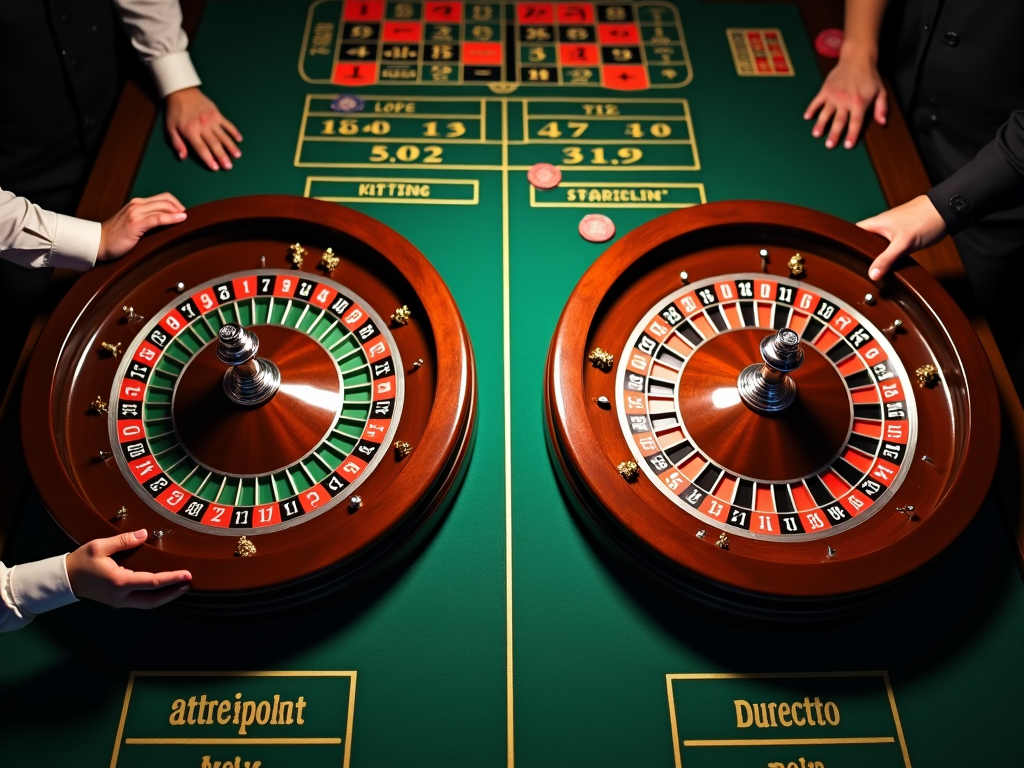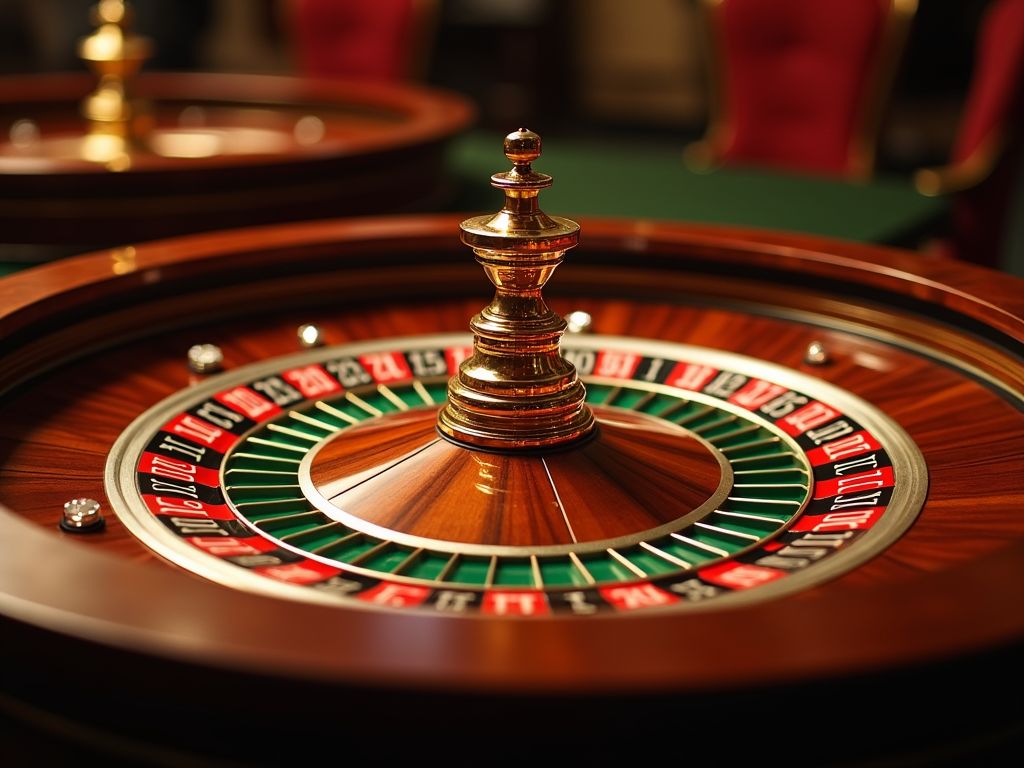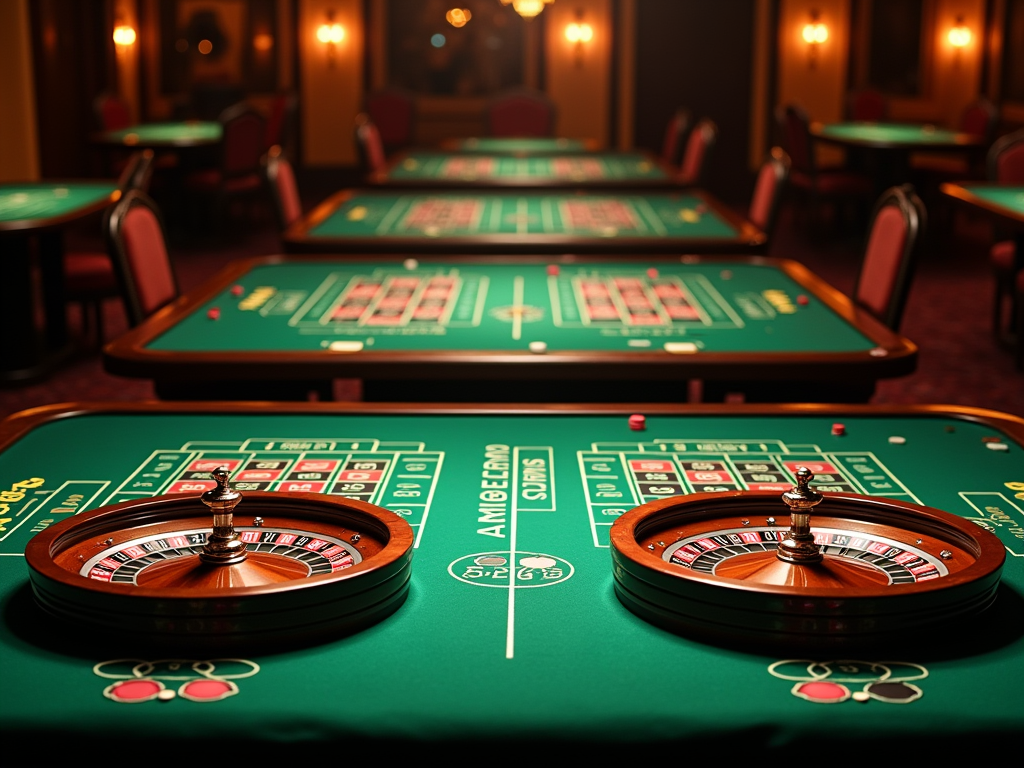Roulette Guide: Understanding the Wheel and Betting Layout
Roulette remains a classic casino game known for its blend of chance and strategy. At its core, two essential components define roulette: the wheel and the betting layout. Players are drawn to its versatility, with options ranging from high-risk bets to safer wagers. This guide focuses on the game’s fundamental elements and how to strategically approach each version—especially highlighting why European roulette stands out.
The Roulette Wheel
The roulette wheel is a marvel of precision engineering. It features pockets numbered 1 through 36, alternating between red and black, with one or two green pockets depending on the version:
- European roulette: Single green pocket (0)
- American roulette: Two green pockets (0 and 00)
This configuration ensures random, fair outcomes while maintaining the house edge. The strategic placement of colors and numbers enhances the game’s unpredictability and fairness.
European vs. American Roulette
The choice between roulette types greatly affects your odds. European roulette gives players a better mathematical edge due to its single zero:
- European House Edge: 2.70%
- American House Edge: 5.26%
That single additional pocket in American roulette increases the casino’s advantage, making European roulette the preferred option among seasoned players seeking better odds.
The Betting Layout
The table is divided into inside and outside betting areas. Each section offers its own risk-to-reward ratio, catering to different play styles:
Inside Bets
These are placed on specific numbers or small groups of numbers. They offer higher payouts but come with lower chances of winning. Common inside bets include:
- Straight-up: Bet on a single number (Pays 35 to 1, ~2.70% chance)
- Split: Bet on two adjacent numbers
- Street: Bet on three numbers in a row
Outside Bets
These are generally safer bets with higher win probabilities but lower payouts. They include:
- Red/Black
- Odd/Even
- High/Low (1–18 or 19–36)
These bets have a winning probability near 48.65% and pay 1:1, making them suitable for more conservative players.
Key Takeaways
- European roulette offers a lower house edge of 2.70% compared to American roulette’s 5.26%.
- Inside bets present higher payouts (like 35 to 1 for straight-up) but lower odds of winning (~2.70%).
- Outside bets deliver better win odds (~48.65%) with 1:1 payouts.
- The roulette wheel ensures fair gameplay with strategically distributed colors and numbers.
- The betting layout is divided clearly to accommodate different strategies and risk preferences.
Conclusion
Roulette distinguishes itself through precise mechanics and a versatile betting structure. The engineering behind the wheel provides a truly random experience, while the well-organized betting zones allow for different levels of risk. For those looking to maximize their chances, European roulette offers a clear statistical edge, adding a strategic component to this timeless game.
European vs American Roulette: What’s the Difference?
Wheel Structure and Layout
The fundamental difference between European and American roulette lies in their wheel layouts. The European wheel features 37 pockets, with numbers 1–36 plus a single zero (0). In contrast, the American version adds an extra double zero (00) pocket, bringing the total to 38 pockets. Both versions maintain 18 red and 18 black numbered pockets, with the zero pockets distinguished in green.
House Edge and Player Odds
The additional 00 pocket in American roulette makes a significant impact on your winning chances. The European version offers a more favorable house edge of 2.70%, while the American variant nearly doubles that to 5.26%. This means you’ll face steeper odds in American roulette despite identical payouts across both versions.
Here’s what this means for your betting strategy:
- A straight-up bet in European roulette has a 1 in 37 chance of winning
- The same bet in American roulette drops to 1 in 38
- Outside bets like red/black or odd/even face similar disadvantages
- The European wheel gives you better value for your money
- The extra 00 pocket effectively reduces your winning probability
The European version’s single zero makes it the preferred choice for players seeking better odds. You’ll find this version standard in European casinos, while American roulette dominates in Las Vegas and other U.S. gaming establishments. I always recommend seeking out European roulette tables when possible, as the lower house edge translates to better long-term playing value.

Inside Roulette Bets: High Risk, High Reward
Single Number and Two Number Bets
Inside bets offer the biggest potential payouts in roulette betting strategy, though they come with higher risk. I’ll break down each type so you can make smart betting decisions at the table.
The Straight Up bet is the boldest move you can make – placing your chips on a single number. While it offers an impressive 35 to 1 payout, your winning odds are 2.70% on European wheels and 2.63% on American wheels. That means you’ll need nerves of steel, but the reward could be substantial.
Split betting lets you cover two adjacent numbers with one bet, paying out at 17 to 1. Your chances improve to 5.41% on European wheels and 5.26% on American wheels, making it a popular choice for players seeking balance between risk and reward.
Multi-Number Inside Bets
When you’re ready to expand your betting range, these options give you more numbers to work with:
- Street Bet: Cover three numbers in a row for an 11 to 1 payout. The odds increase to 8.11% (European) and 7.89% (American)
- Corner Bet: Place chips at the intersection of four numbers for an 8 to 1 payout, with odds of 10.81% (European) and 10.53% (American)
- Six Line Bet: Combine two street bets to cover six numbers, paying 5 to 1 with odds of 16.22% (European) and 15.79% (American)
The multi-number bets show how the relationship between risk and reward balances out – as your odds of winning increase, the potential payout decreases. This creates an interesting dynamic where you can adjust your betting strategy based on your comfort level with risk and your desired win amounts.

Outside Roulette Bets: Playing it Safer
Understanding Your Odds
Roulette offers a safer approach to betting through outside bets, which come with better winning chances but lower payouts. These bets are ideal for beginners and players who prefer a steadier gaming experience.
Let me break down the most common outside bets and their potential returns:
Red/Black, Odd/Even, and High/Low bets are your safest options. These even-money bets pay 1 to 1, meaning you’ll double your money when you win. On a European wheel, your winning chance is 48.65%, while American roulette offers slightly lower odds at 47.37% due to the additional double zero pocket.
Dozens and Columns provide a bit more excitement with higher payouts. These bets cover twelve numbers each and pay 2 to 1 on wins. With Dozens, you’re betting on numbers 1–12, 13–24, or 25–36. Column bets cover vertical lines of numbers on the table layout. Your winning probability sits at 32.43% on European wheels and 31.58% on American ones.
Here’s a quick look at your betting options:
- Red/Black: Bet on all red or all black numbers
- Odd/Even: Choose either all odd or all even numbers
- High/Low: Select numbers 1–18 (Low) or 19–36 (High)
- Dozens: Pick one of three groups of twelve numbers
- Columns: Back one of the three vertical columns
I recommend starting with even-money bets if you’re new to roulette. They’re straightforward to understand and give you the best chances of winning. As you gain confidence, try mixing in some Dozens or Column bets for variety and higher potential returns.
Remember that while European roulette offers better odds thanks to its single zero, both versions maintain the same payout ratios. The house edge comes from that pesky zero (and double zero in American roulette), which isn’t included in any outside bets.
The Roulette Table Layout Explained
The roulette table’s distinctive green felt layout creates a perfect playing field for this classic casino game. The numbered grid forms the heart of the action, featuring numbers 1 through 36 arranged in three columns and twelve rows.
Inside and Outside Betting Areas
The table layout splits into two main betting zones – the inside and outside areas. The inside betting section holds the primary numbered grid where players can place direct bets on specific numbers or small number combinations. Each number alternates between red and black, matching their corresponding wheel positions on the roulette wheel for perfect betting alignment.
The outside betting area frames the numbered grid and offers broader betting options with higher odds of winning. Here’s what you’ll find in the outside betting section:
- Column bets covering twelve numbers vertically
- Dozen bets for groups of twelve consecutive numbers
- Even/Odd number bets
- Red/Black color bets
- High (19-36) or Low (1-18) number bets
The zero pocket(s) sit at the top of the number columns, colored in green to stand apart from the red and black alternating pattern. In American roulette, you’ll spot both a single zero (0) and double zero (00), while European tables feature just one zero pocket.
The table’s systematic layout makes bet placement straightforward, with clear sections for different betting options. The numbered grid’s arrangement lets players quickly spot adjacent numbers and betting patterns, while the outside betting area provides easy access to simpler wagers with better odds.
How the Roulette Wheel Works
The roulette wheel stands as a masterful feat of engineering, balanced with absolute precision to create fair and random results. I’ve found that understanding the wheel’s mechanics helps players make smarter betting decisions at the roulette table while appreciating this iconic casino game’s sophistication.
The Wheel’s Structure
The wheel’s design follows a carefully planned layout where numbers aren’t arranged in sequential order. Instead, high and low numbers are distributed evenly around the wheel’s circumference. Red and black pockets alternate throughout, creating the distinctive pattern that’s become synonymous with roulette. The zero pockets (single zero in European roulette, and both single and double zero in American roulette) are positioned strategically between numbers, typically in green to distinguish them from other betting options.
The Spinning Mechanism
During each game round, the wheel and ball create an engaging display of opposing forces. Here’s what happens in each spin:
- The dealer spins the outer wheel rim in one direction
- The ball gets launched in the opposite direction along the wheel’s upper track
- As the ball loses momentum, it bounces across the number pockets
- Diamond-shaped deflectors randomize the ball’s trajectory
- The ball settles into its final pocket, determining the winning number
The wheel’s perfectly calibrated weight distribution ensures that no particular section becomes favored over time. Every component, from the pocket separators to the wheel’s tilt angle, plays a crucial role in maintaining fair play and creating that signature roulette excitement that’s kept players coming back for centuries.

Sources:
Wikipedia – “Roulette”
Vegas Slots Online – “How to Play Roulette: Rules, Odds, and Payouts”
Casino.org – “How to Play Roulette”





